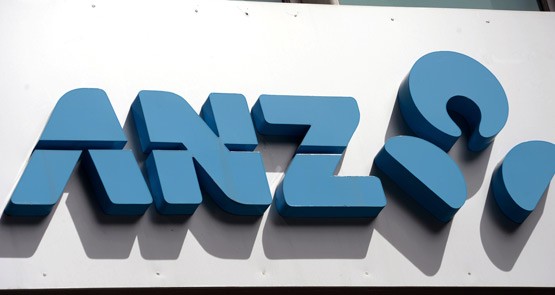
ANZ at it again? Once again ANZ has confirmed that it doesn’t have the best of cultures, or oversight from managers. On top of the ASIC move against the bank over what it alleges was the rigging of a key market interest rate, fines for breaking lending laws, and stories of managerial excess in parts of its markets businesses, ANZ bank has been forced into conducting an independent review of its insurance and superannuation arm, OnePath, after a series of breaches involving 1.3 million customers. ASIC said yesterday super had been paid into the wrong account for some customers for up to a year. The review comes after ASIC raised concerns about compliance at OnePath. The breaches, including those that did not require monetary remediation, total $53.5 million and occurred between early 2013 and mid-2015. ASIC said ANZ has had to pay $4.5 million in compensation and refunds to its customers over the breaches. ANZ self-reported the problem, which is a big plus for the bank. — Glenn Dyer
Wait, there’s more. And then there’s the financial advice problems at the Commonwealth and other banks and groups such as IOOF. There’s more evidence of greed, poor culture and weak oversight and administration in the sector. Since those types of claims in the building industry were enough to get the Abbott government to call a royal commission, why not finance? After all, millions of people have been impacted and the losses are substantial, and the ASIC is looking into ANZ and possibly other banks (Westpac and NAB people have been questioned, according to media reports) for rate fixing, so it is a much bigger deal than the antics of the CFMEU. If the ALP were involved in banking and insurance, you can bet an inquiry would be underway. — Glenn Dyer
APRA lines up the banks, again. “Do better with your record keeping,” the lead banking regulator advised banks and other lenders in a letter on Friday to get their home loan data as accurate as possible (surely you would think that would be a required skill set for any bank or lender, wouldn’t you?). But for abut the umpteenth time in the past year, a key bank regulator has raised questions about the competence of the banks. On other occasions it’s been a question of banking culture and oversight, and lending standards on home loans were shown to be relaxed (non-existent in some examples). The performance of the Commonwealth in financial advice and insurance are other areas of concern, as well as various problems ensnaring ANZ. Said the Australian Prudential Regulation Authority:
“A number of ADIs (Authorised Deposit-taking Institutions) have recently reported significant changes in housing loan purpose between investment and owner-occupied. Where the change in loan purpose is not reported correctly, APRA, the Reserve Bank of Australia and the Australian Bureau of Statistics are impeded in accurately ascertaining the underlying movements in housing loans. Reporting of fixed-term housing loans must reflect the current purpose of the loan because the split by housing loan purpose is important for monetary policy and financial stability considerations.”
— Glenn Dyer
RBA unhappy, again. In fact the central bank is “not very happy, Jan”. That unhappiness showed up in a comment on the January Financial Aggregates, the RBA said on February 29:
“Following the introduction of an interest rate differential between housing loans to investors and owner-occupiers in mid-2015, a number of borrowers have changed the purpose of their existing loan; the net value of switching of loan purpose from investor to owner-occupier is estimated to have been $35.3 billion over the period of July 2015 to January 2016 of which $1.4 billion occurred in January. These changes are reflected in the level of owner-occupier and investor credit outstanding.”
The RBA’s monthly aggregates have contained a similar statement for four of the seven months from last July. The admonition to improve their record keeping sounds like a bureaucrat’s dream, but it is important because up to January, more than $85 billion in home loans have had to be reclassified for various reasons by ANZ and NAB ($50 billion in the year to June) and a further $35 billion or more up to the end of January, including $1.4 billion in January. Now that doesn’t sound much with home lending running at around $1.5 trillion a year, but is 5% of that total, which is significant, and remember that if banks consistently get it wrong, regulators come to suspect other data and practices they are supposed to be self-regulating and monitoring. APRA and the RBA did it to NAB 12 years ago in the foreign-exchange options trading losses debacle, after which NAB was intensively supervised by regulators for nearly two years. Don’t think it can’t happen again. — Glenn Dyer







“There’s more evidence of greed, poor culture and weak oversight and administration in the sector. ”
Time perhaps to have Commonwealth or State-owned banks so that when you put your super in, you know that you will get a fair deal, and Commonwealth knows that it will not have to pay you a pension.
A win-win situation.